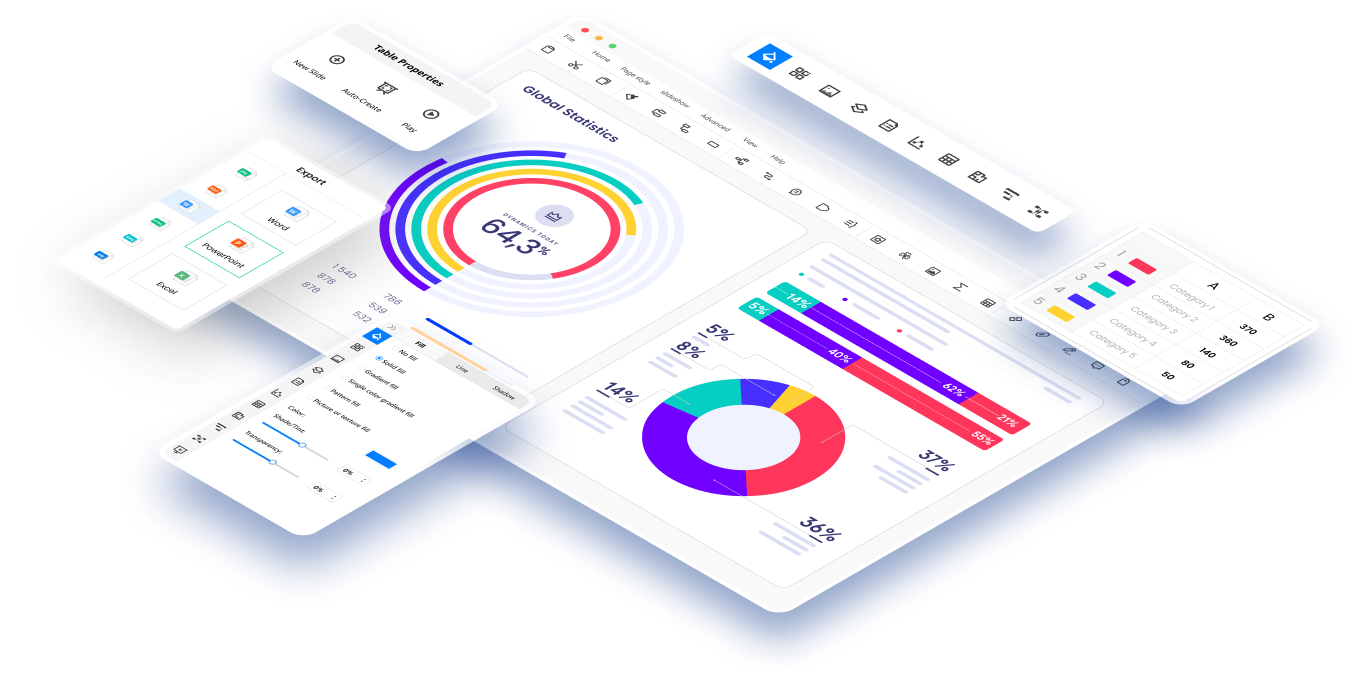Risk management is a crucial process that helps organizations identify, assess, and mitigate potential risks that can impact their objectives. By implementing an effective risk management framework, businesses can navigate uncertainty and enhance their ability to seize opportunities within the risk framework.
In this article
What Is Business Risk Management?
Business risk management refers to the systematic identification, assessment, and management of potential risks that may impact an organization's ability to achieve its objectives. These risks can encompass a broad range of factors, including economic volatility, and operational inefficiencies, among others.
The significance of risk management lies in its potential to enhance an organization's ability to navigate through uncertainty and adversity. By proactively identifying and analyzing potential risks, businesses can develop risk management mitigation strategies.
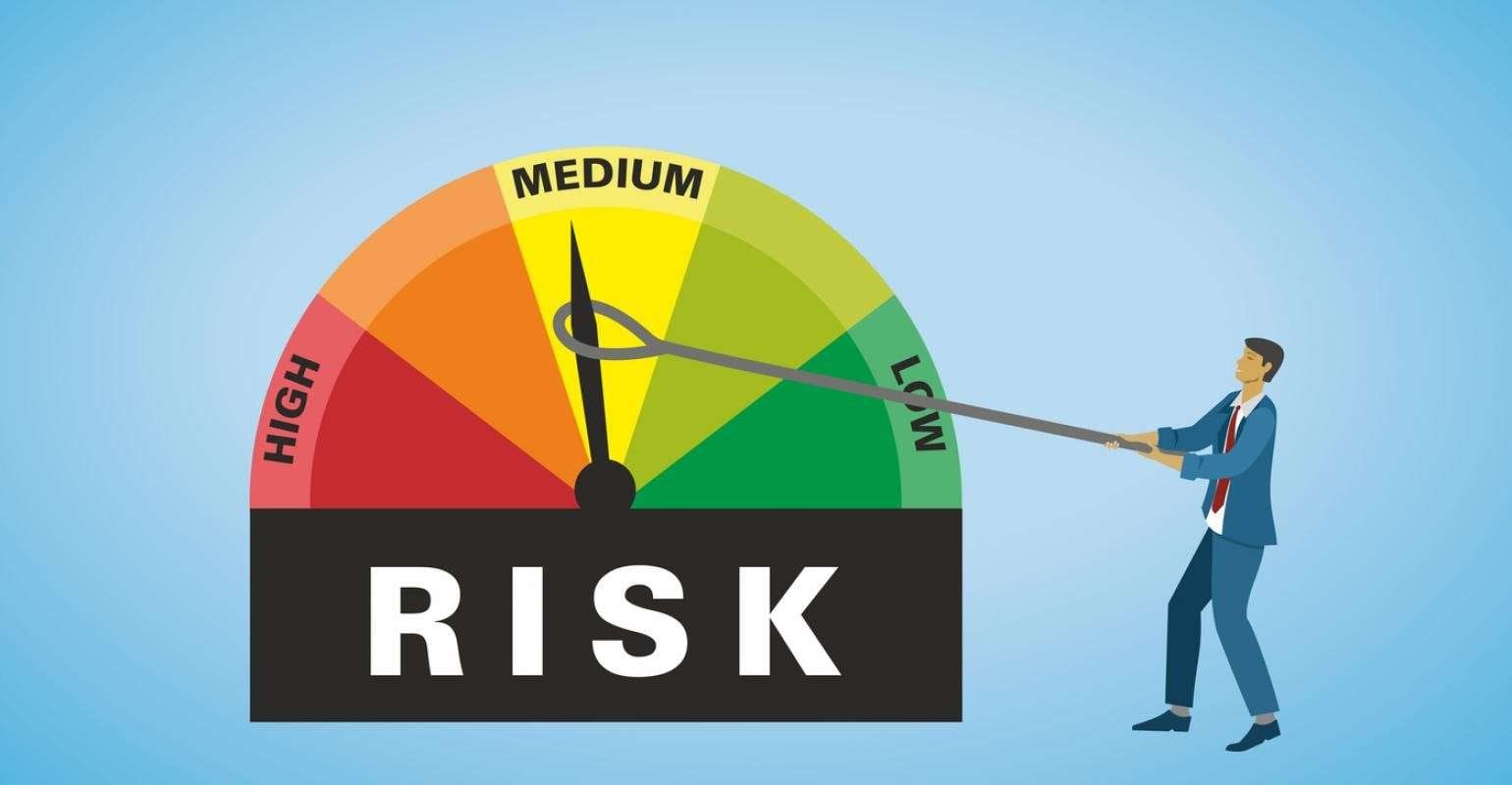
Key Principles of Risk Management Cycle
The risk management cycle comprises several key principles and components. These principles and components guide the whole process.
- Risk Identification:Identifying and understanding potential risks relevant to the organization's operations, industry, and context.
- Risk Assessment:Assessing the likelihood and impact of identified risks to prioritize and allocate resources effectively.
- Risk Mitigation:Implementing strategies and controls to reduce the impact and likelihood of risks.
Risk Management Process and Steps
Implementing an effective risk management governance framework is crucial. The risk management process involves several steps.
- Establishing the Context:Understanding the organization's strategic goals, objectives, internal and external context, and risk appetite as a foundation for risk management.
- Risk Analysis and Evaluation:Assessing risks through qualitative or quantitative methods.
- Risk Treatment:Developing and implementing specific plans to manage the identified risks.
To effectively integrate risk management into organizational culture, several key factors need to be considered. Leadership should demonstrate a commitment to risk management, fostering a culture of accountability and encouraging risk-aware behavior.
Agile risk management involves continuous monitoring and adapting to changes throughout the project lifecycle. To control Agile risk management, teams can prioritize risks based on their impact and likelihood, implement mitigation strategies, and regularly review and update risk assessments.
Global risk encompasses risks that have potential effects beyond national boundaries and directly influence the interconnectedness of markets, economies, and societies worldwide. Global risk management is critical because events in one part of the world can have far-reaching consequences.
Technology plays an ever-increasing role in business operations. So, organizations must ensure technology risk management.
- Cybersecurity Threats:The risk of data breaches or malicious attacks on digital assets. IT risk management helps in mitigating these threats.
- Technological Obsolescence:The risk of investing in or relying on outdated technologies that can hinder competitiveness.
- Data Privacy:Data risk management concerns related to the collection, storage, and use of personal information.
- Integration Challenges:The risk of encountering difficulties when implementing new technologies or integrating disparate systems.
- Dependency on Third Parties:Reliance on external service providers for critical technologies poses risks such as service interruptions or contractual disputes.
Jira, a widely used project management tool, can also be a valuable asset for tracking risks. With Jira risk management, organizations can create customized workflows, set up risk registers, and utilize built-in reporting capabilities. Jira also allows for assigning ownership, setting priorities, and attaching relevant documentation to each risk.
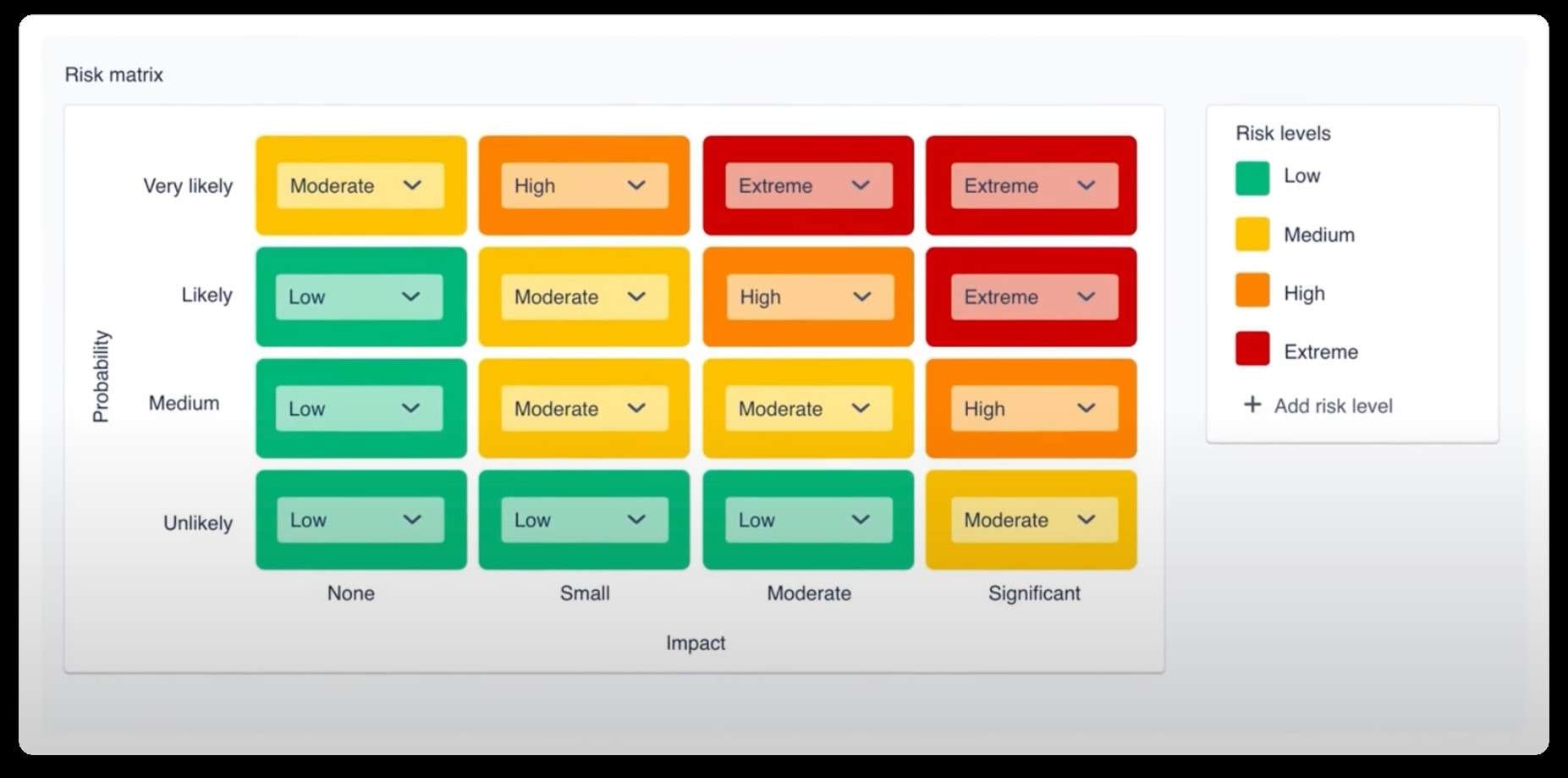
Create a Risk Management Chart with EdrawMax
With Wondershare EdrawMax, users can quickly create a risk management chart with a professional-looking layout that clearly displays the key elements of the risk management process. Follow these steps to create a risk management chart using the tool:
Step 1: First, log in to Wondershare EdrawMax. The tool is the ultimate choice for creating visually captivating risk management charts.
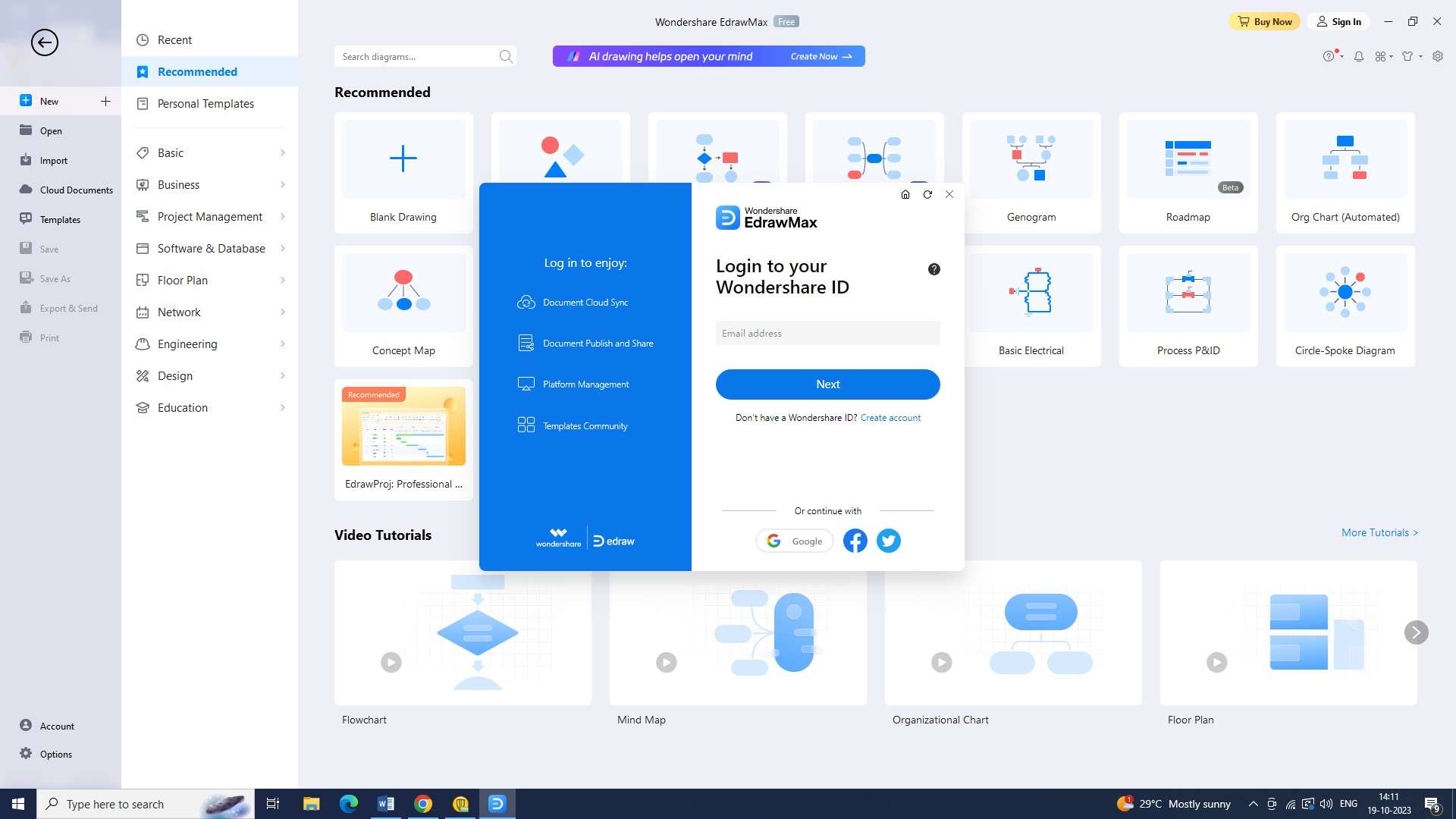
Step 2: You must now open a new document. To do this, click the "New" button in the interface's upper left corner.
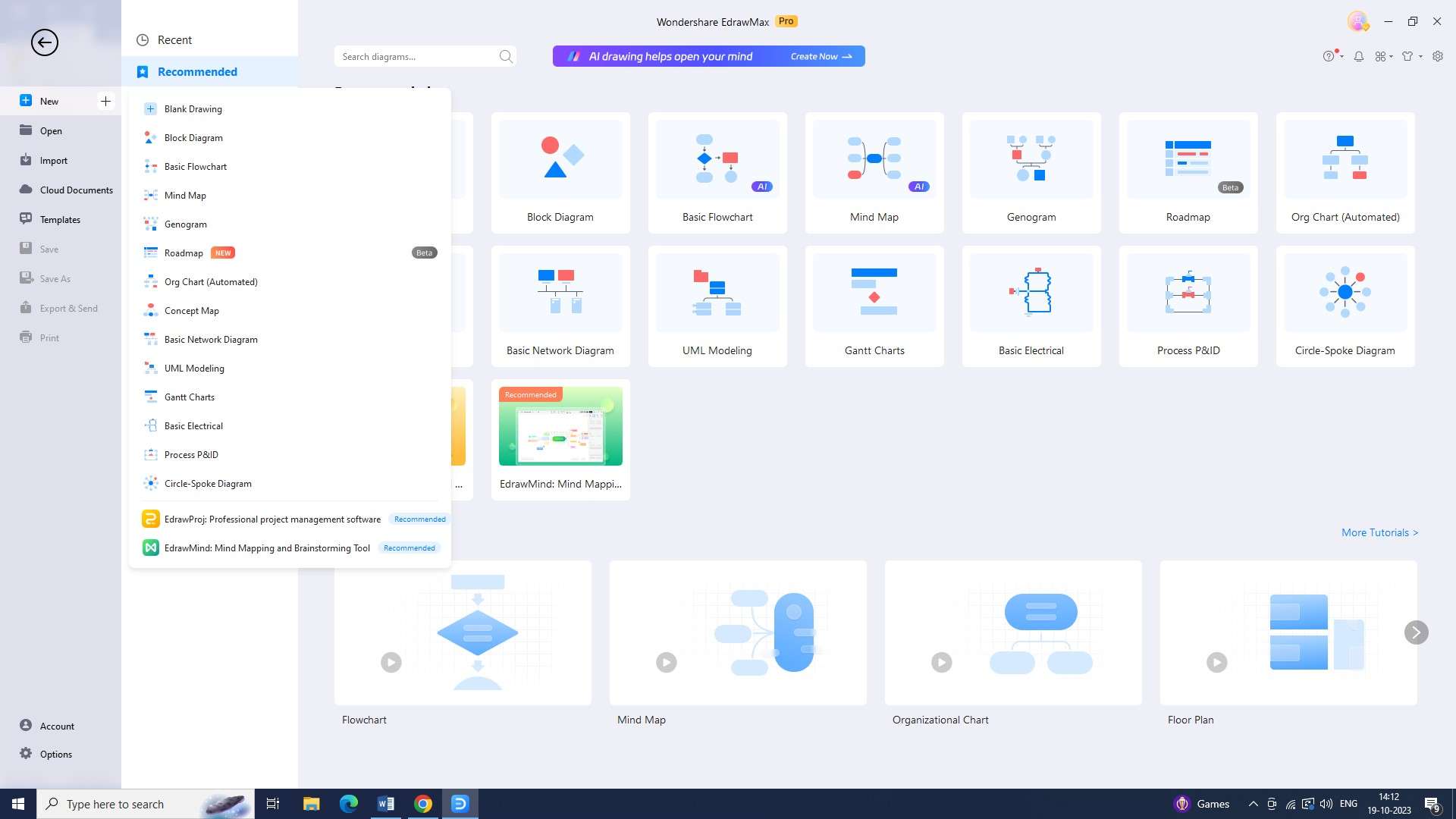
Step 3: Now search in the template library and marvel at the wide array of professionally designed templates at your disposal. Choose the one that best suits your needs.
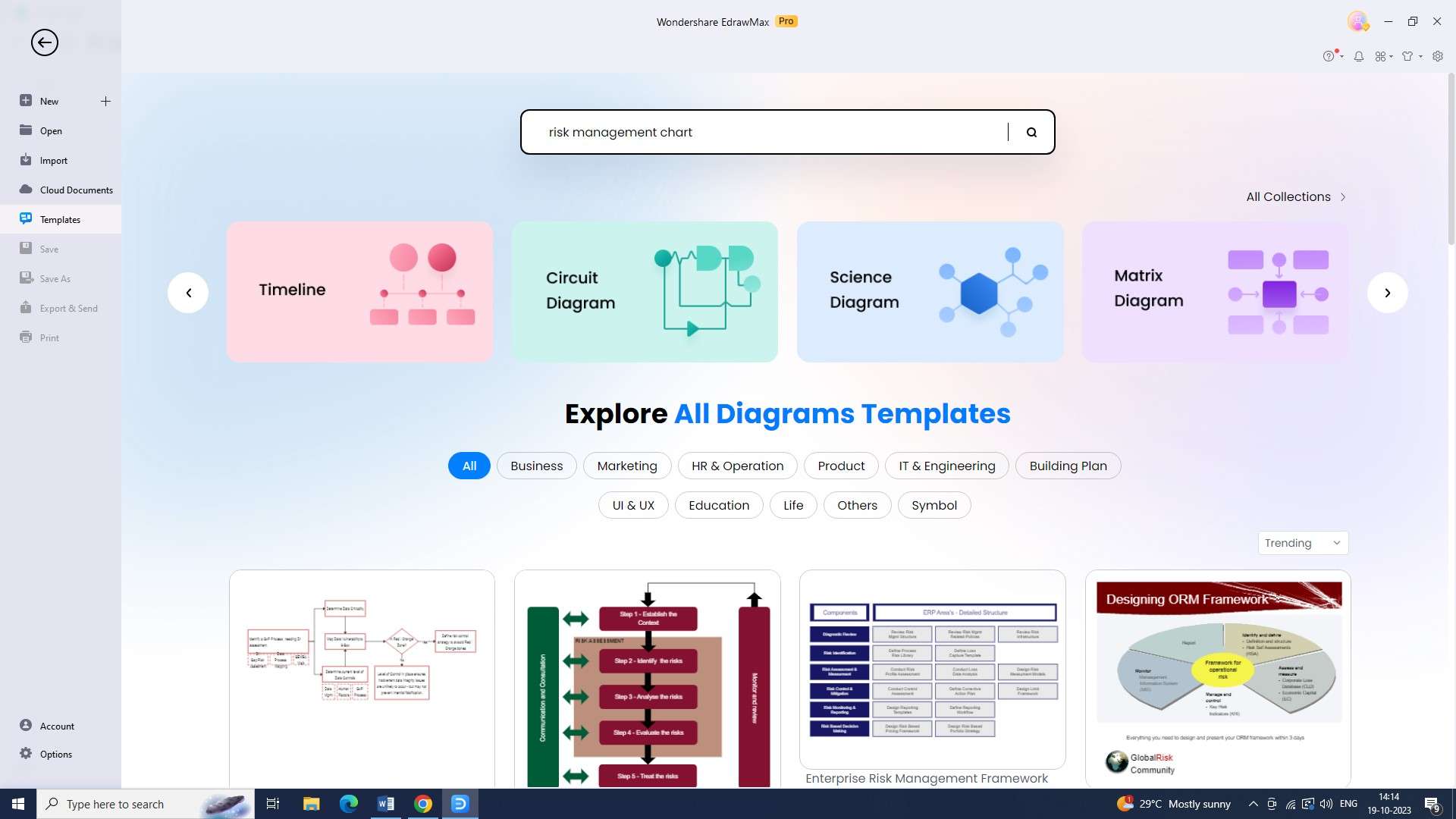
Step 4: Now, let your creativity flow as you begin customizing the chart to fit your specific requirements. The tool’s intuitive interface makes it a breeze to edit elements and color schemes.
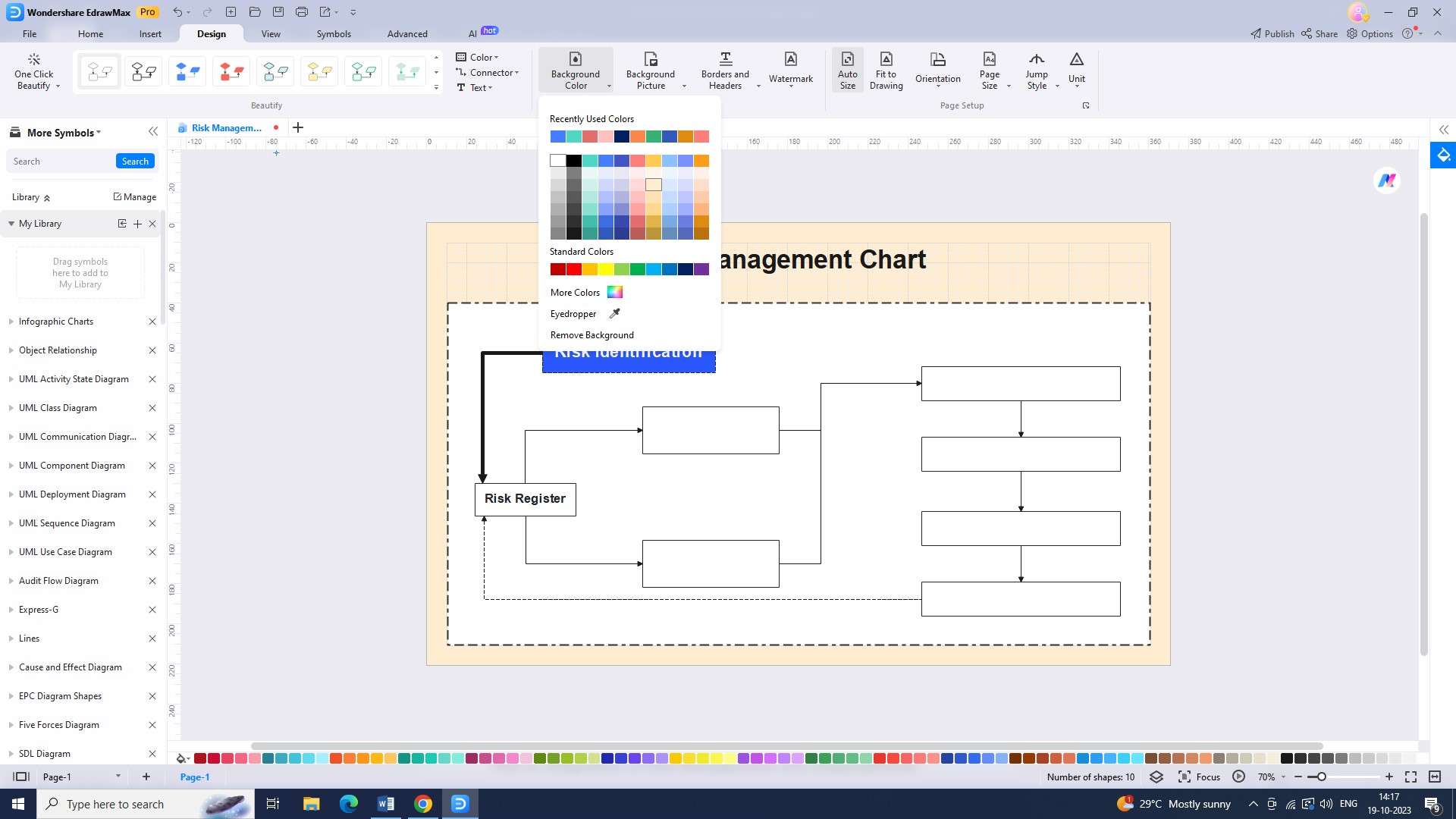
Step 5: Add details such as types of risk analysis and mitigation strategies in the chart. Utilize the tool’s versatile text and label tools to do this.

Step 6: Specify the level of the types of risks in risk management in your chart. Insert a shape into your chart, and enter this information.
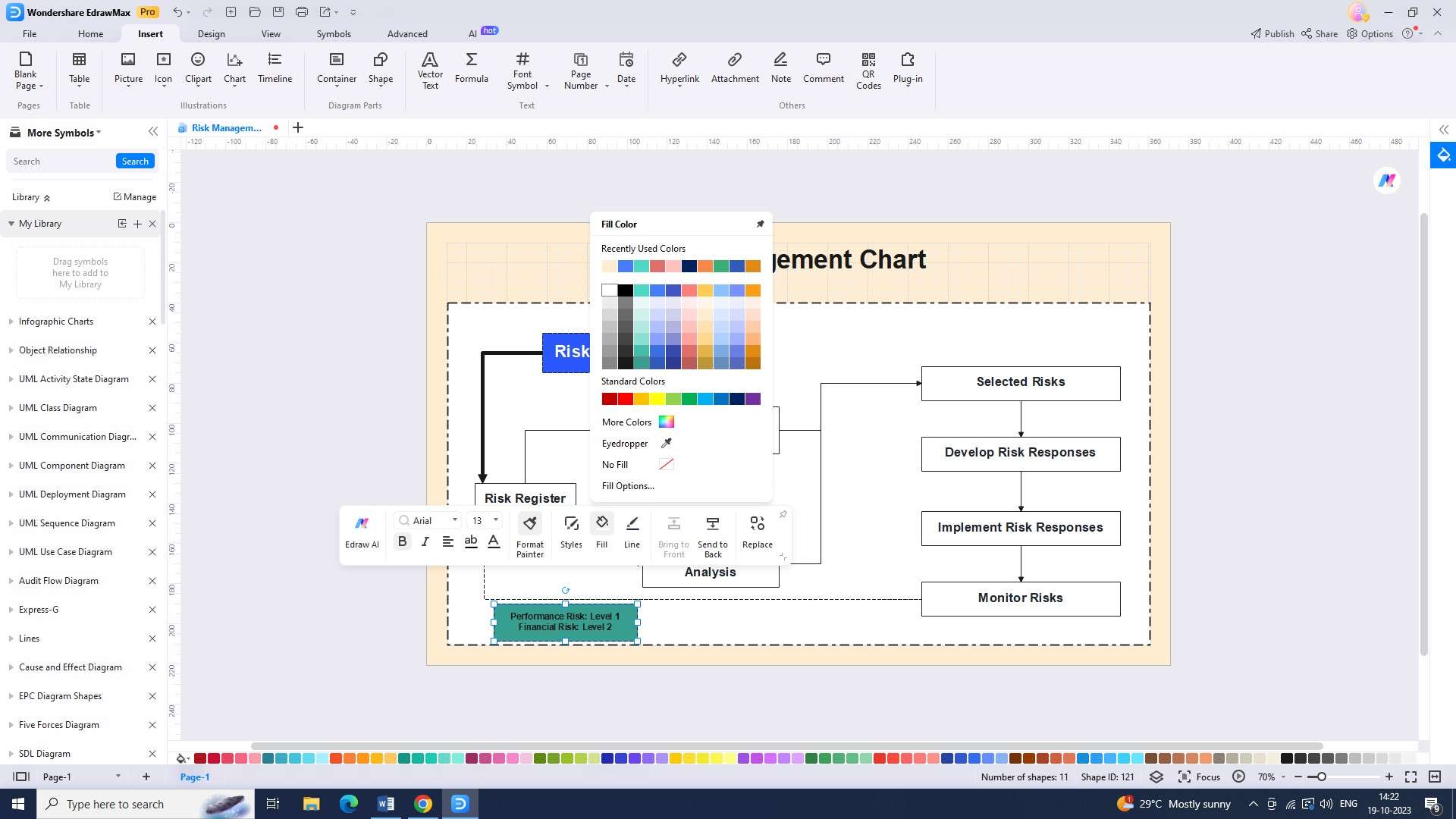
Step 7: Now that you are done, remember to save your chart. EdrawMax provides various saving options, allowing you to effortlessly preserve your work.
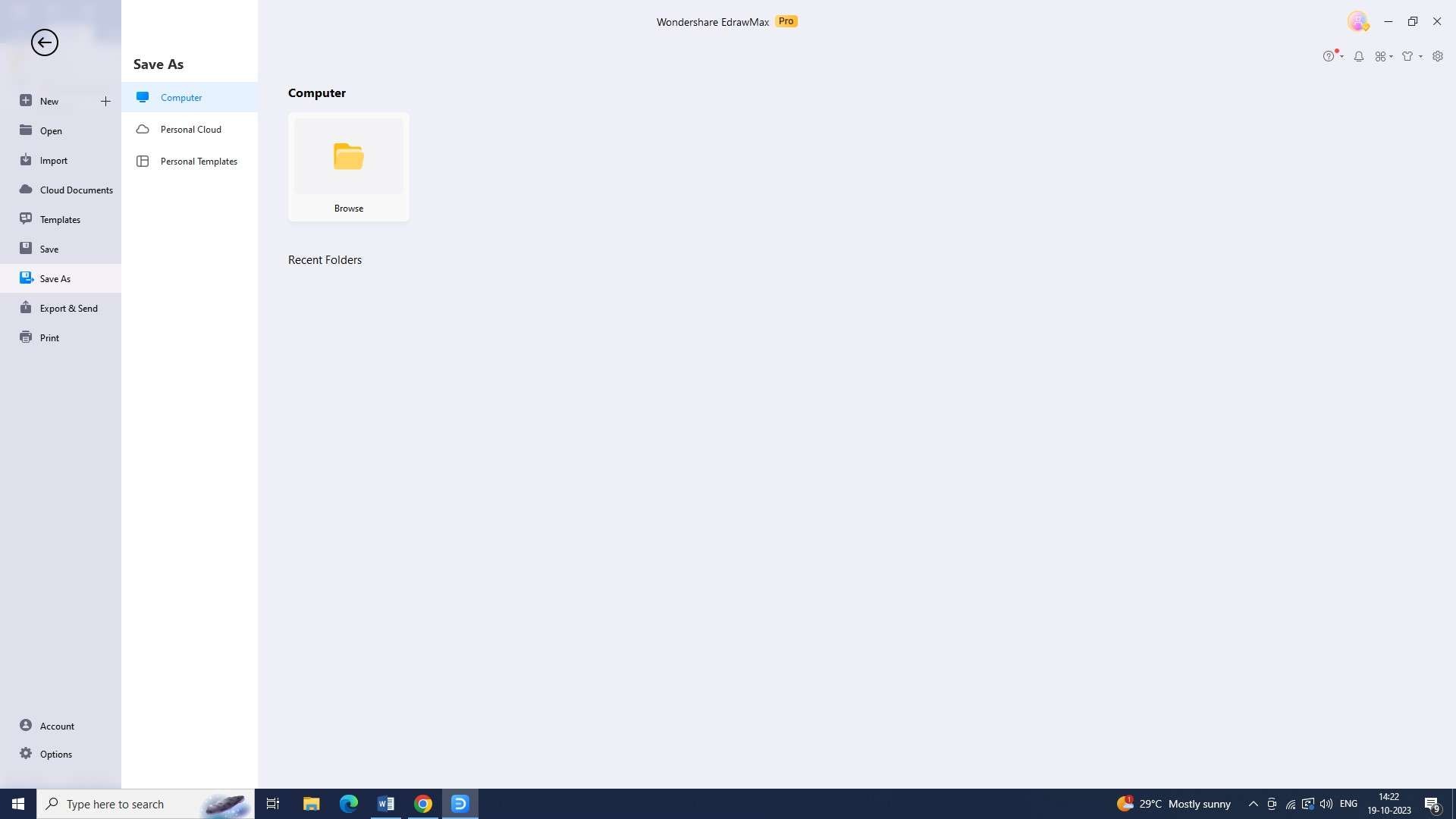
Step 8: Now, you can export your chart in various formats. Whether you need to present your findings in a meeting or embed the chart in a report, EdrawMax equips you with the tools to effortlessly share your work.
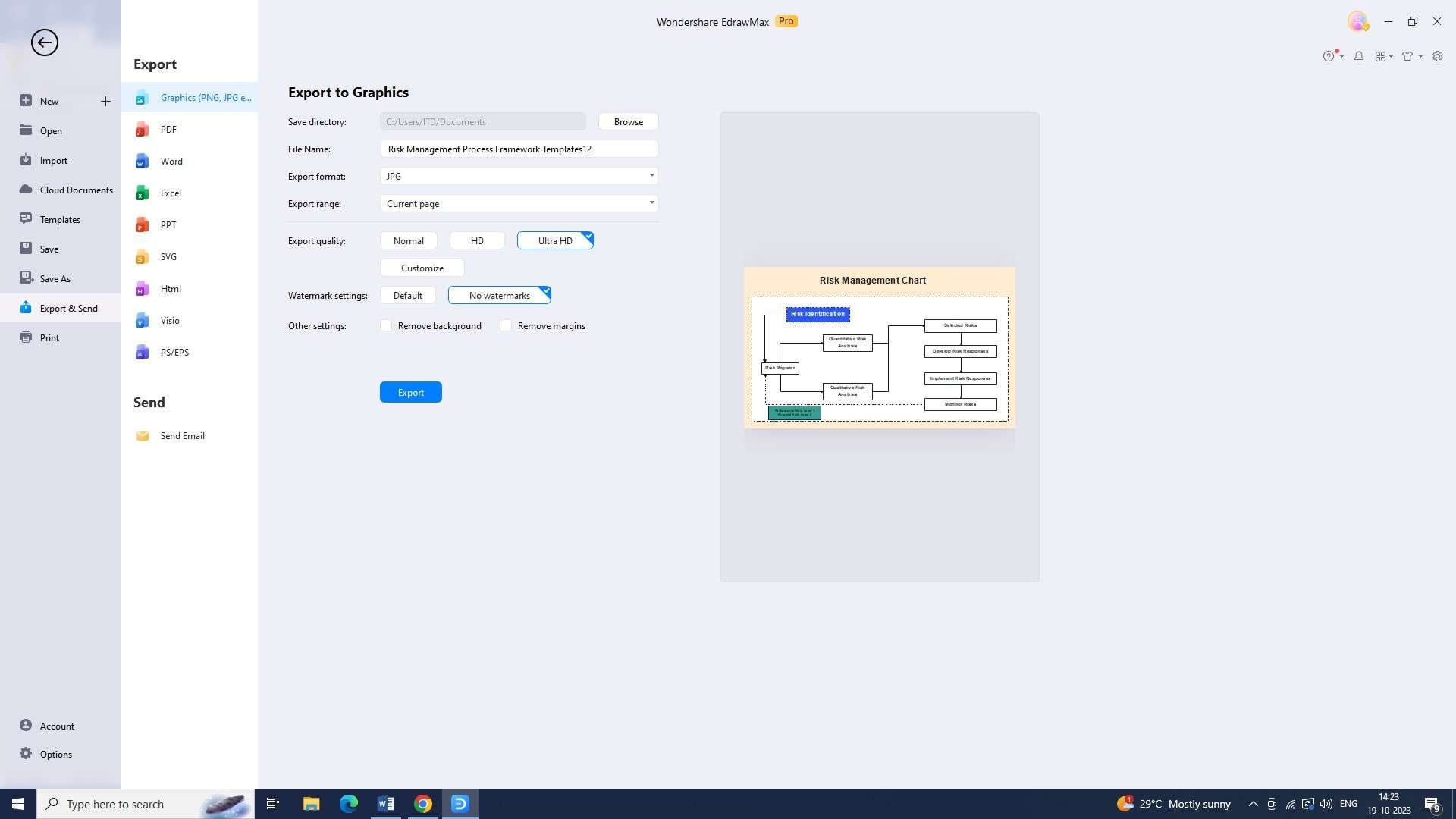
Conclusion
Effective risk management is essential for organizations to proactively identify and manage potential risks. By following the key principles and components of the risk management lifecycle, businesses can better navigate the complexities of risk and safeguard their success.

